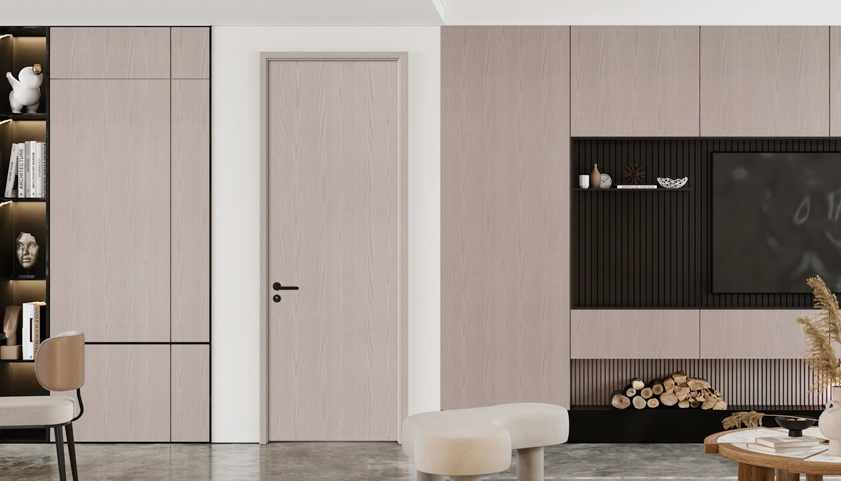As global awareness of sustainability continues to grow, buyers are becoming more conscious of their material choices, especially in construction and interior design. For those seeking practical yet eco-aware solutions, the melamine door presents a compelling option. It offers durability, style, and environmental responsibility—all at a price point that makes sense for large-scale procurement and residential renovation alike.
At ZHEJIANG JIANGSHAN XUPAI DOORS., LTD., we are committed to producing interior decoration materials that balance aesthetics, performance, and sustainable thinking. Our melamine room door products are designed with affordability and ecological value in mind, providing global buyers with reliable alternatives.

Understanding the Materials Behind Melamine Doors
Melamine doors are made by applying melamine resin—a type of thermosetting plastic—onto engineered wood boards like particleboard or MDF (medium-density fiberboard). This process creates a durable, sealed surface that resists heat, scratches, and moisture.
By using engineered core materials rather than solid wood, melamine doors help reduce the demand on forest resources. They also minimize production waste by utilizing sawmill by-products and wood chips, making the manufacturing process more efficient and environmentally aware.
Cost Advantages Without Sacrificing Quality
Budget considerations remain important for homeowners and procurement professionals alike. Melamine doors are an ideal solution for those who want value without compromising style or longevity. Their construction enables mass production at a lower cost while still offering the durability needed for daily use.
When compared to solid wood or high-gloss painted doors, melamine doors provide a more affordable alternative while maintaining a clean, modern appearance suitable for a wide range of applications.
How Melamine Doors Support Eco-Smart Projects
Choosing melamine doors can play a role in environmentally conscious interior design. Here’s how:
1. Resource Efficiency
Engineered boards used in melamine doors make better use of available wood materials, reducing logging pressure and promoting sustainable forestry.
2. Low-VOC Finishing
Unlike many painted surfaces, melamine coatings are factory-applied and cured, producing fewer volatile organic compounds (VOCs). This results in healthier indoor air quality.
3. Long Service Life
Melamine doors are built to last, which reduces the frequency of replacements and waste generation. Their easy maintenance also contributes to lower lifecycle costs.
Applications of Melamine Room Doors in Sustainable Spaces
Whether in residential projects, apartment buildings, or commercial interiors, room doors made with melamine are suitable for multiple use cases:
Rental properties: Durable and affordable, melamine doors are ideal for property developers focused on long-term savings.
Student housing or dormitories: Easy maintenance and cost control are advanced priorities here, and melamine fits both.
Eco-conscious renovations: For homeowners upgrading older interiors, melamine doors offer a smart compromise between design, budget, and sustainability.
Supporting Modern Interior Goals
Beyond environmental benefits, melamine doors contribute to the overall look and feel of a space. They come in a variety of textures and tones that mimic natural wood, stone, or simple matte finishes. This flexibility makes them a favorite among designers working on minimalist or contemporary themes.
Additionally, melamine surfaces require less upkeep, which helps maintain a cleaner, more organized environment—another important aspect of modern sustainable living.
If you’re looking for room door solutions that are both cost-effective and eco-minded, melamine doors are worth serious consideration. Whether for a single-family home or a large residential complex, their benefits are clear and practical—exactly what today’s procurement professionals and designers are looking for.

 English
English 中文简体
中文简体